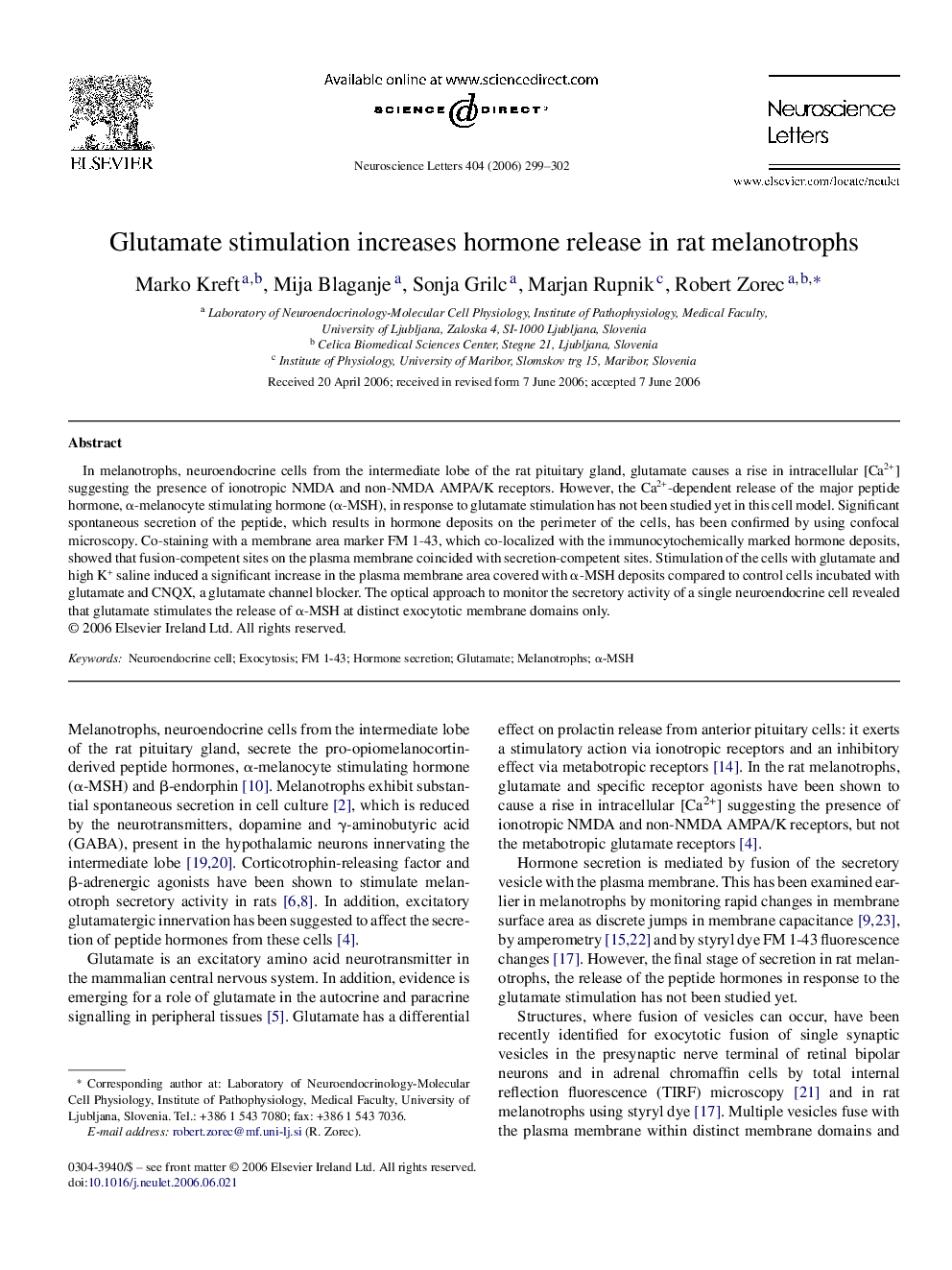| Article ID | Journal | Published Year | Pages | File Type |
|---|---|---|---|---|
| 4350464 | Neuroscience Letters | 2006 | 4 Pages |
In melanotrophs, neuroendocrine cells from the intermediate lobe of the rat pituitary gland, glutamate causes a rise in intracellular [Ca2+] suggesting the presence of ionotropic NMDA and non-NMDA AMPA/K receptors. However, the Ca2+-dependent release of the major peptide hormone, α-melanocyte stimulating hormone (α-MSH), in response to glutamate stimulation has not been studied yet in this cell model. Significant spontaneous secretion of the peptide, which results in hormone deposits on the perimeter of the cells, has been confirmed by using confocal microscopy. Co-staining with a membrane area marker FM 1-43, which co-localized with the immunocytochemically marked hormone deposits, showed that fusion-competent sites on the plasma membrane coincided with secretion-competent sites. Stimulation of the cells with glutamate and high K+ saline induced a significant increase in the plasma membrane area covered with α-MSH deposits compared to control cells incubated with glutamate and CNQX, a glutamate channel blocker. The optical approach to monitor the secretory activity of a single neuroendocrine cell revealed that glutamate stimulates the release of α-MSH at distinct exocytotic membrane domains only.
